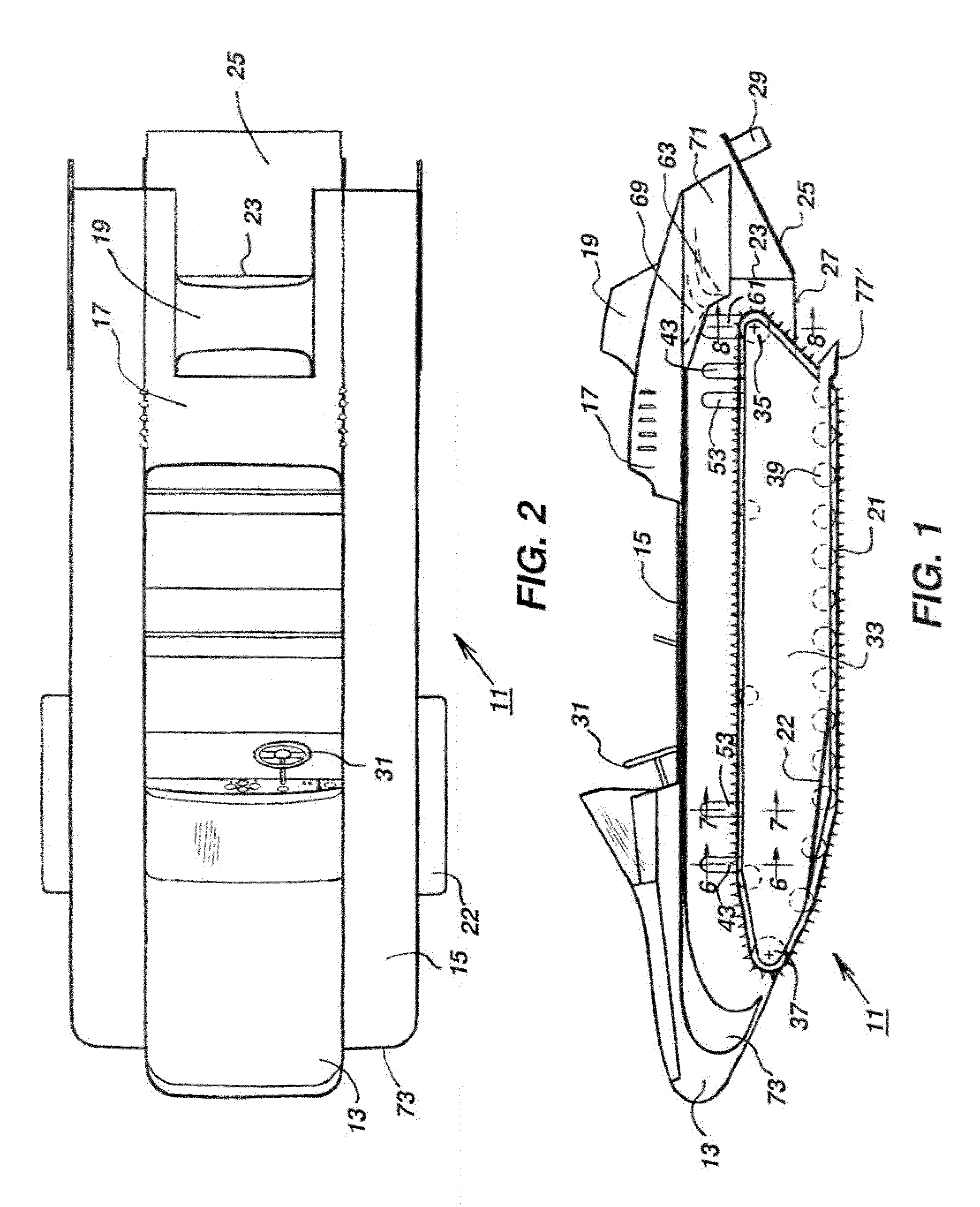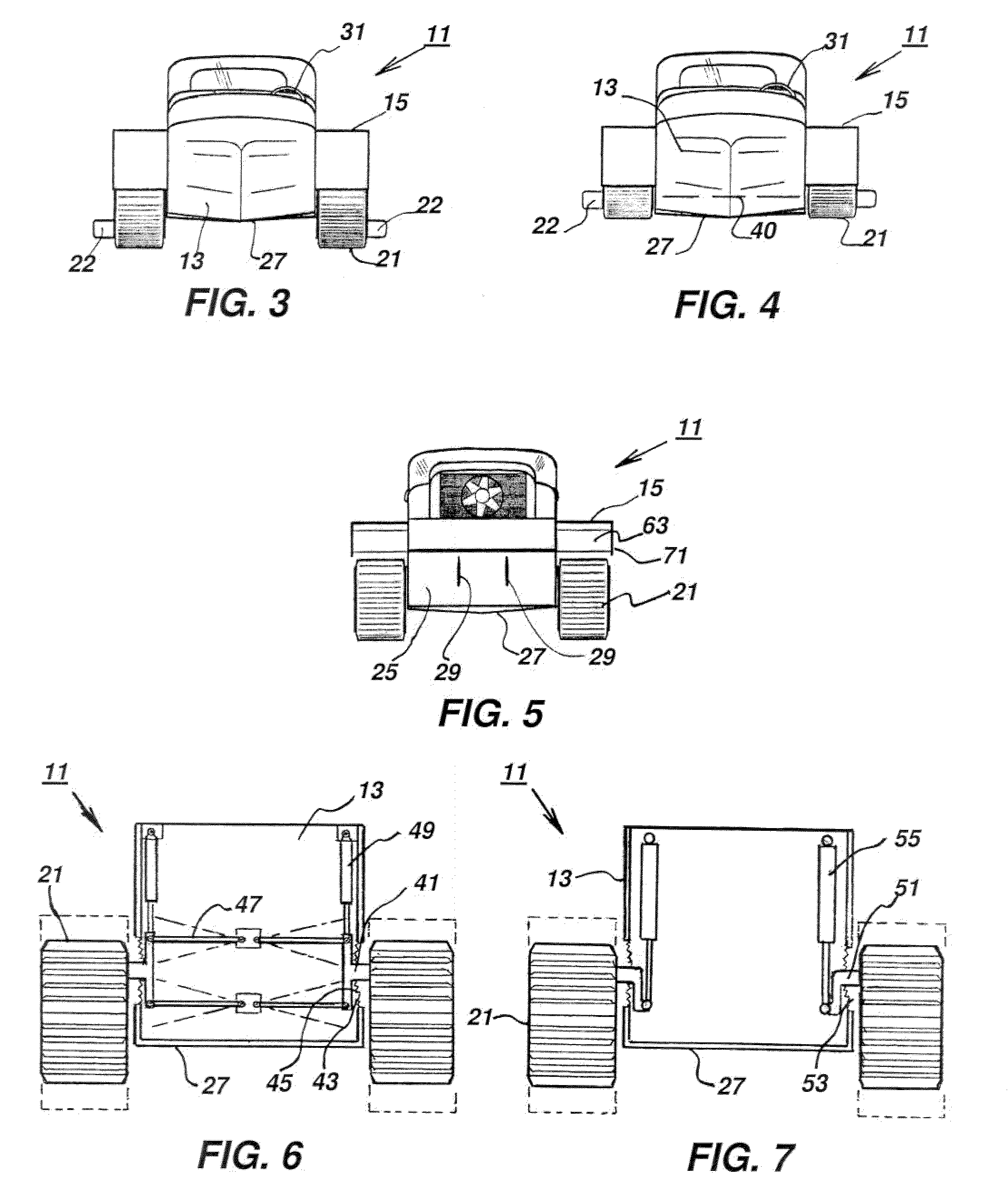High water-speed tracked amphibian
a tracked amphibian and high water speed technology, applied in the field of amphibious vehicles, can solve the problems of snowmobiles not being able to slow down below planing speed, no operational military vehicles that could better the 10 mph water speed, and and achieves the effect of reducing the complexity, weight and maintenance and reducing the complexity of a dual propulsion system
- Summary
- Abstract
- Description
- Claims
- Application Information
AI Technical Summary
Benefits of technology
Problems solved by technology
Method used
Image
Examples
Embodiment Construction
[0042]Referring to FIG. 1, vehicle 11 has a buoyant hull 13. In this embodiment, fenders 15 are mounted to hull 13 on each side. An engine is located in the aft portion of hull 13 and enclosed by an engine cowling 17. A radiator air scoop 19 serves as an air intake for cooling the radiator of the engine.
[0043]A continuous rotatable track 21 is mounted to each side of hull 13. Tracks 21 provide propulsion for hull 13 not only on land but also when water borne. A side splash plate 22 may be mounted to an outboard side of each track 21 for restricting water spray while under high forward speed in water. Splash plates 22 are located forward of the mid point along the length of vehicle 11.
[0044]Hull 13 has a transom 23, which is generally perpendicular to fenders 15 in this embodiment. A transom flap 25 is mounted by a hinge to the bottom of transom 23. Transom flap 25 extends rearward from transom 23. Transom flap 25 has a storage position inclined upward as shown in FIG. 15, and an ope...
PUM
 Login to View More
Login to View More Abstract
Description
Claims
Application Information
 Login to View More
Login to View More - R&D
- Intellectual Property
- Life Sciences
- Materials
- Tech Scout
- Unparalleled Data Quality
- Higher Quality Content
- 60% Fewer Hallucinations
Browse by: Latest US Patents, China's latest patents, Technical Efficacy Thesaurus, Application Domain, Technology Topic, Popular Technical Reports.
© 2025 PatSnap. All rights reserved.Legal|Privacy policy|Modern Slavery Act Transparency Statement|Sitemap|About US| Contact US: help@patsnap.com



